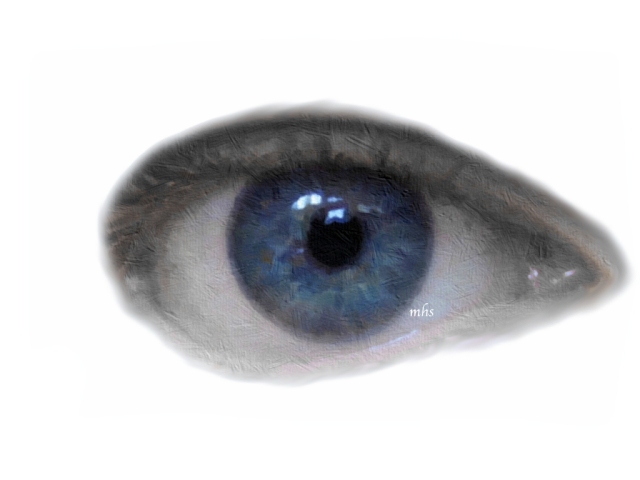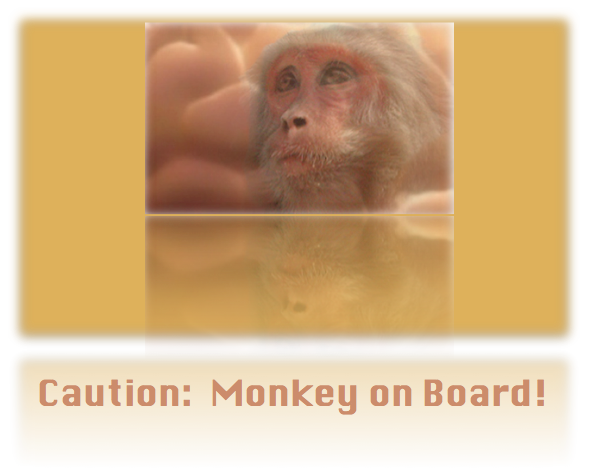On March 9th and 10th I’ll join Dee Edington in Ann Arbor to celebrate the University of Michigan’s 30th Annual Wellness in the Workplace Conference. The focus will be on “Next Practices for Champion Companies.” Dee has asked me to speak what is on my mind for about 30 minutes and then join a panel with Larry Chapman, Ron Loeppke and Casey Chosewood to discuss private sector challenges and opportunities. Dee and I have been friends and colleagues for the past thirty years so when he tells me I can speak what’s on my mind, he knows that I will do just that.
http://www.hmrc.umich.edu/content.aspx?pageid=49&fname=conf.txt
For those of you who can’t make it to Ann Arbor (great town…you should come visit), what follows is the backgrounder for my 30 minute talk before the panel.
Warning: This is a long post (but in easy to digest bite-size junks).
________________________________________________________________
Thesis Statement – Wellness at the Worksite: We Can’t Get There from Here
As I read the latest research reports on worksite wellness including COI and ROI studies, I can’t help but shudder just a tad…okay, in some cases more than a tad. Mostly because of what my old friend Yogi would call “Deja vu all over again.”
Don’t get me wrong, there is an absolute call for ongoing research but, please, let’s be careful that we understand current state before we plan future state. I’m not so sure that all of the professionals wishing to advance health and wellbeing at the worksite are on the same page. With that, I humbly present my 35-year biased perspective of where we are today. Without an understanding of these basics…worksite wellness will remain an illusive goal.
HEALTHCARE VS. SICKCARE…TIME TO LEVEL SET
Nothing and Nobody will Lower your Healthcare Costs: The cost of healthcare will continue to grow; they will never shrink. The concern is the rate of growth. Currently, the cost of healthcare doubles every seven years. Given the projected spend in 2009 of 2.8 trillion; we’re looking at 5.6 trillion in 2016 and 11.2 trillion in 2023. We can slow the rate of burn significantly through improvements in efficiency and effectiveness. Currently, it is estimated that approximately one third of our annual healthcare spend is wasted on unnecessary treatments, redundant tests, fraud, errors, and superfluous activities and procedures that do nothing to improve the nation’s health. That equates to around $700 billion in 2009. Cut that figure by half, and there would be more than enough money to offer top-notch care to every one of America’s 46 million uninsured.
Death is not a Curable Disease: Life is precious and we should do all that we can to ensure that every individual lives a life accented by quality and opportunity. That being said, we are all going to die (sorry to be the one to tell you). In the end it isn’t the date of birth and the date of death that matter…it’s the quality of the dash that separates the two.
In 1900, US life expectancy was about 47 years with minimal disability prior to death. At that time, individuals died at home and, for the most part, their families picked up the tab. A baby born in 2010 can expect to live until around 78-80, preceded by about two years of disability. More than likely, death will occur in a hospital and Medicare will pick up most of the cost.
Increasingly, expanded morbidity and complex care accompany the years just prior to death. According to the Centers of Medicare & Medicaid Services, one-quarter of Medicare dollars are spent in the last year of a patient’s life. Also, end of life dollars vary greatly depending upon where you live. The Dartmouth Institute for Health Policy has found that spending is nearly three times higher in Manhattan than in areas of Colorado, mainly because patients in Manhattan average 21.9 days in the hospital during their last six months, compared with only 6.3 days in Grand Junction, Colo. Yet higher costs don’t necessarily mean longer or better lives.
Should the social and political will determine that our collective objective is to provide maximized extended life options for all citizens — at all costs — we have to find a way to fund it.
One way is to eliminate unnecessary treatment, redundant tests, fraud and errors along with nonessential activities and procedures, as mentioned above. In addition, we can address the social issues that determine individual and community health including housing, education, hunger, health literacy, and access to affordable primary, secondary and tertiary prevention. We can also move toward a qualitative instead of quantitative medical reimbursement system, a true healthcare system that rewards outcomes and patient/practitioner compliance instead of a sickcare system that encourages increased numbers of visits, prescription drugs and medical procedures.
Then, again, we could simply do nothing and pay increased taxes to cover the increased costs…
“Wellness” is an Amorphous, Dangerous & Distracting Term: The word “wellness,” when used as an antonym for sickness loses punch and significance because it’s not measurable. How does “wellness” translate into dollars? The argument goes, “I get that “sickness” means missing work, incurring medical expenses and running-up pharmacy costs, but what are the savings, or, absence of cost, that comes with being well?” It’s too slippery to measure, so anything called “wellness” is often the first to feel the blade of budget cutback. Far from fluff and waste, WELLNESS is an umbrella descriptor for programs, policies and initiatives that promote health prevent certain diseases and compress morbidity (shorten length of illness). Wellness is also an objective and subjective incremental state of well being with infinite variations. The next time someone talks about the need to improve productivity, slow the surge of healthcare costs, recruit top talent, retain key employees and improve the overall quality of life for your community…THINK WELLNESS. And, then, tell me “wellness” is fluff!
The Primary Areas of Focus Should Be:
- Affordable Healthcare for All
- Universal Coverage
- Social Determinants
- Behavioral Determinants
- Personal Quality of Life
- Health Promotion
- Accountability
- Disease Prevention
- Compressed Morbidity
- Employee Productivity
- Tort Reform
- Reduced Paternalism
As just mentioned, the word “wellness” is a convenient catch-all term that distracts and confuses the real issues that have created, perpetuated and exacerbated today’s healthcare crisis. These issues are an absence of effective health promotion (social marketing, facilitating healthy corporate & community cultures and meaningful health policies), a lack of focus on disease prevention (including awareness, education and early detection via age & gender appropriate screenings) a focus on compressed morbidity (early intervention, evidence-based treatment and care compliance), increased productivity (presenteeism, reduced absenteeism, employee retention and key hires), achieving business objectives (mission & margin), universal and affordable healthcare (access and coverage for all), personal quality of life (what matters to ME), tort reform (reasonable, equitable and judicious compensation for medical incompetence) and economically efficient & outcome effective medical treatment.
Organizations Measure Success According to Mission & Margin…Individuals (Employees) Measure Success in Terms of Subjective Wellbeing:
Management – At the end of the day, the goal of every organization is to open the doors the next morning. Simplistic, yes; however, sustaining and expanding both mission and margin is a fiduciary responsibility of every corporate officer. That goes for the one-person-not-for-profits all the way up to Fortune 500 companies. Nobody in senior management will argue the importance of having healthy and happy employees (mom and apple pie). That being said, if employee health and wellness initiatives, policies and activities are not tightly framed and measured in the context of corporate survival, growth and profitability, they will be viewed as ancillary and delegated to the same bucket that holds company picnics, charitable contributions and free fresh fruit in the cafeteria. When times get tough, calculators are worked overtime and, well…you know the rest. That’s why it’s important that you always level-set when using the word “wellness” in a conversation with senior management or when submitting budget requests/renewals. Make sure it is clearly understood that you addressing some or all of the issues listed in item four, above. If not, your programs, initiatives and policies will suffer and, gradually, go away.
Employee – At the same time that you are tending to management’s objectives, remember that at the end of day the goal for the employee is to live life to its fullest…according to their terms and definitions.
Foregoing bad genes and catastrophic events, evidence shows that a life accented by a healthy blend of proper nutrition, physical activity, intellectual stimulation, emotional support, spiritual engagement and social interaction tends to be long and relatively free from illness and infirmity. That’s the science of life. The art of living, however, is specific, subtle and subjective. To advance this art, an individual must refine and extend their senses to seek out and build a unique existence that continuously advances their personal state of wellbeing. If employers are to acquire and retain the best of the best, they must respect and address the issues of employee contentment and happiness. Once thought frivolous, studies show that these “soft” issues correlate with presenteeism — ability to focus on the job while at the job — productivity and retention.
There is no Political Will to Change Healthcare in a Meaningful Way: While there is considerable noise, there is no real interest in changing the U.S. healthcare system. This is the case, in part, because most Americans don’t feel any visceral urgency to change. Yes, sure, people are aware that there is a problem and everyone knows someone who has suffered under the current burden of expense, error and inefficiency; however, for most people healthcare reform is several pegs down on their ladder of priorities.
No doubt there will be some re-shuffling of the deck chairs but the system, as presented, will continue for the foreseeable future. This, in spite of the fact that The Commonwealth Fund warns us that the average premium for family coverage in employer-sponsored policies will double in the coming decade from about $12,300 in 2008 to $23,800 in 2020 with a growing cost-shift to the workers. Premiums will also continue to soar for individuals who buy their own coverage directly.
So, are we willing to fight for a country where individual freedoms include guaranteed health, shelter and education? Do we have the individual desire and passion needed to push the political will in a direction that benefits all of our citizens? I don’t believe that is the case. To drive home the point, take a look at our current allocations. Of the $2.8 trillion annual U.S. healthcare spend, less than 5 percent is for primary prevention, early detection and early intervention. There is no indication that these percentages will change in any measurable way. It is clear that the current political will is more about protecting and growing the sickness industry than it is about advancing the health and wellbeing of the people.
Unlike underdeveloped nations, where health and wellness (prevention) is an economic as well as moral imperative, the U.S. healthcare system, in order to survive and profit, requires and reinforces sickness and disease. This lack of meaningful action toward disease prevention and health promotion makes it clear that we agree with Gordon Gekko: “…sickness is good” [sic] for the U.S. economy and there is no political will to fundamentally change and transform the system.
If “Greed” is Good… “Sickness” is Better: In the 1987 film “Wall Street” Michael Douglas, as Gordon Gekko, delivers the memorable “Greed is Good” speech…
“…The point is, ladies and gentleman, that greed — for lack of a better word — is good. Greed is right. Greed works. Greed clarifies, cuts through, and captures the essence of the evolutionary spirit. Greed, in all of its forms — greed for life, for money, for love, knowledge — has marked the upward surge of mankind. And greed — you mark my words — will not only save Teldar Paper, but that other malfunctioning corporation called the USA.”
If you substitute a better word like “integrity,” “respect” or “passion” for the word “greed,” he’s right.
By placing money in the same context as life, love and knowledge, the character’s intent was to put greed in a favorable and honorable light. The problem, of course, is that greed is not good. It is as Webster defines it:
Greed: “An excessive desire to acquire or possess more (especially material wealth) than one needs or deserves.”
Greed, in all of its forms, greed for power, greed for control, greed for self-interest and greed for spite has marked the downward surge of mankind. And, greed, you mark my words, will ruin that malfunctioning corporation called the USA (think recent events on the real Wall Street).
What Gekko was saying to the stockholders is that he can make them a great deal of money; that he can earn them millions, if not billions, of dollars if they turn over control of the fictitious company, Teldar Paper, to him. Millions? Billions? That’s chump change when compared to the trillions to be made in sickcare.
So, if greed is good…clearly, sickness must be better.
Pogo was Right: “We have met the enemy and he is us.” With this statement, Walter Kelly, creator of the Pogo comic strip, attempted to explain that each individual is wholly vested in the democratic process. The results of the process fall on the head of the public and he who defers to others or procrastinates in raising his voice can blame no one but himself.
If you have ever experienced a situation, group, or culture that you considered (sensed or thought) was wrong, odd, or dangerous only to remain silent, as you gradually viewed that same situation, group, or culture as normal, neutral or beyond your ability to influence, you have assimilated and/or abdicated. It may also signal that you have compromised values, ethics, morals and sensibilities in exchange for acceptance and security.
Healthcare Spend & Focus Needs to Shift from Disease Management (Survival & Costly) to Primary Prevention (Thrival & Inexpensive): Once diagnosed, it is critical that provider and patient join forces to contain and minimize the impact of disease. However, keep in mind that the right side of the continuum reflects diminished quality of life and consumes 98% of the healthcare dollar; whereas, concentration on the left side results in high quality of life and cost avoidance. You know the old sayings: “A ounce of prevention is worth a pound of cure,” “A stitch in time, saves nine,” and “You can pay me now…or, you can pay me later.” Another one to keep in mind is:
“Survival may bring years of life but Thrival brings life to your years!”
…and dollars to your wallet
It is Arrogant & Presumptuous to Suggest that — without context — a List has Independent Value: Reflect on the items listed above and place them in your world. Do they make sense? Do any of them touch on your circumstances? Are you motivated to learn more? If you are anxious, angry, confused or frustrated with today’s healthcare crisis but haven’t taken any meaningful action to change things, go back and read item eight.
More to come in future posts…
________________________________________________________________
Michael
http://www.samuelsonwellness.com/























